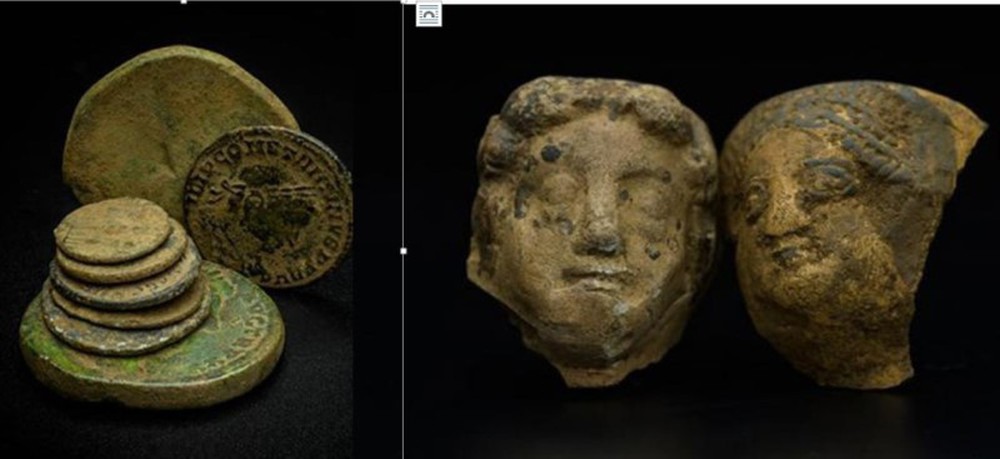Precious artifacts in the ancient village
Over the years, a group of 80 archaeologist A study in collaboration with private contractor MOLA Headland Infrastructure surveyed a site in Stone Age near the village of Chipping Warden, south of Northamptonshire (Middle England) and uncovered a number of artifacts of historical and cultural importance.
Called the Blackgrounds (named after the area’s rich, fertile soil), the site was once known as roman city rich and bustling trade in the fourth century AD. Excavating the remains of an ancient settlement, archaeologists have found abundant evidence that this place was once a prosperous and highly active commercial area.
Since the 18th century, it has been known that there is a village Rome on Blackground. But until now, the secret of the long-buried settlement was only discovered by archaeologists who dug deep into the ground.
Evidence shows that the Blackgrounds were settlements long before the Romans set foot in England. Early settlers arrived at the Blackgrounds around 400 BC, and for several hundred years after that, the village remained small and deserted. Things only changed in the 4th century AD, when the Romans started to significantly expand the site with new construction projects.
So far, what archaeologists have found has exceeded expectations. They found a variety of Roman items, including cremation urns, souvenirs, glass vases, uniquely beautifully crafted jewelery and more than 300 coins minted in Roman times. Apart from that, they also found a set of shackles that were used to shackle prisoners and slaves.
Other interesting finds include workshops, ceramic furnaces and wells, and various items for use at home or at work. At one site, archaeologists found a layer of red soil that appeared to have been altered by the impact of high temperatures. This location could be a metal foundry, a pottery kiln, a bread kiln.
Prosperous Settlements

Artifacts found under Blackgrounds.
Archaeologists have also found important signs of construction activity, the buried remains of about 30 Round Iron Age houses, made of wood, mud and thatch. They also found the remains of stone buildings along with various roads dating to the Iron and Roman times.
These ruins have helped archaeologists trace the history of the village, from the early days of the Iron Age to its capture by the Romans, and changes in the first century AD.
By the 4th century AD, carts and wagons were constantly loading and unloading goods, so the Roman government had to build roads large enough to accommodate the trade that took place here. The 10m wide road that runs through the village center demonstrates this.
In addition to land routes, traders can also transport goods in and out of areas near the Cherwell River, thereby expanding the availability of goods needed from all over. The discovery of such a wide and well-preserved road, as well as so many other discoveries, helps us to understand a lot about the people who lived here.
Interestingly, the 300 Roman coins found at the site were not kept in reserve, but scattered everywhere, as if lost or thrown away. This evidence shows that a lot of money and goods were exchanged in person at the Blackgrounds location.
Archaeological findings also show that the changes that occurred from the Roman occupation of the Blackgrounds area did not mean that the inhabitants were driven out. Instead, they had to accept Roman processes, from customs, import regulations, building architecture to complying with Roman supervision and management without a fight.
“Undoubtedly, this is one of the most impressive sites that MOLA Headland Infrastructure discovered while working on the HS2 project. This site has the potential to change our understanding of the Roman landscape in the region and beyond,” said James West, MOLA site manager of the excavation. ongoing.
Since 2018, Project HS2 archaeologists have discovered and excavated more than 100 sites between London and Birmingham. So Blackgrounds had to be unique and extraordinary to pique the interest of much of the archaeological community in the UK.
“The opportunity to research a place like the Blackgrounds and rewrite its long history vividly, through artifacts, ruins of buildings and roads, has allowed us to deepen our understanding of life in rural South Northamptonshire during the Iron and Roman Ages,” said archaeologist Mike Court, chair of the study. HS2 team.
at Blogtuan.info – Source: Soha.vn – Read the original article here



